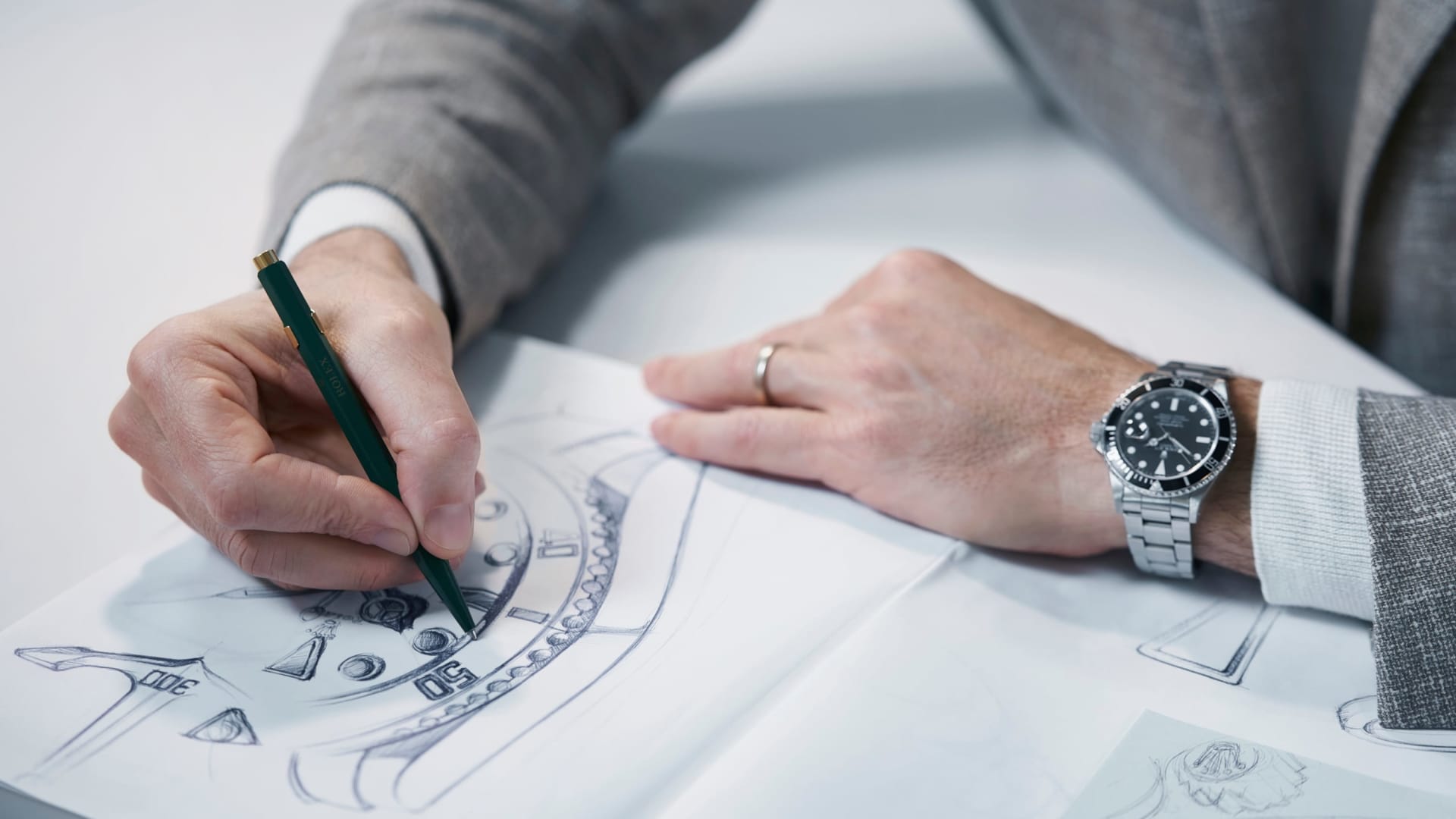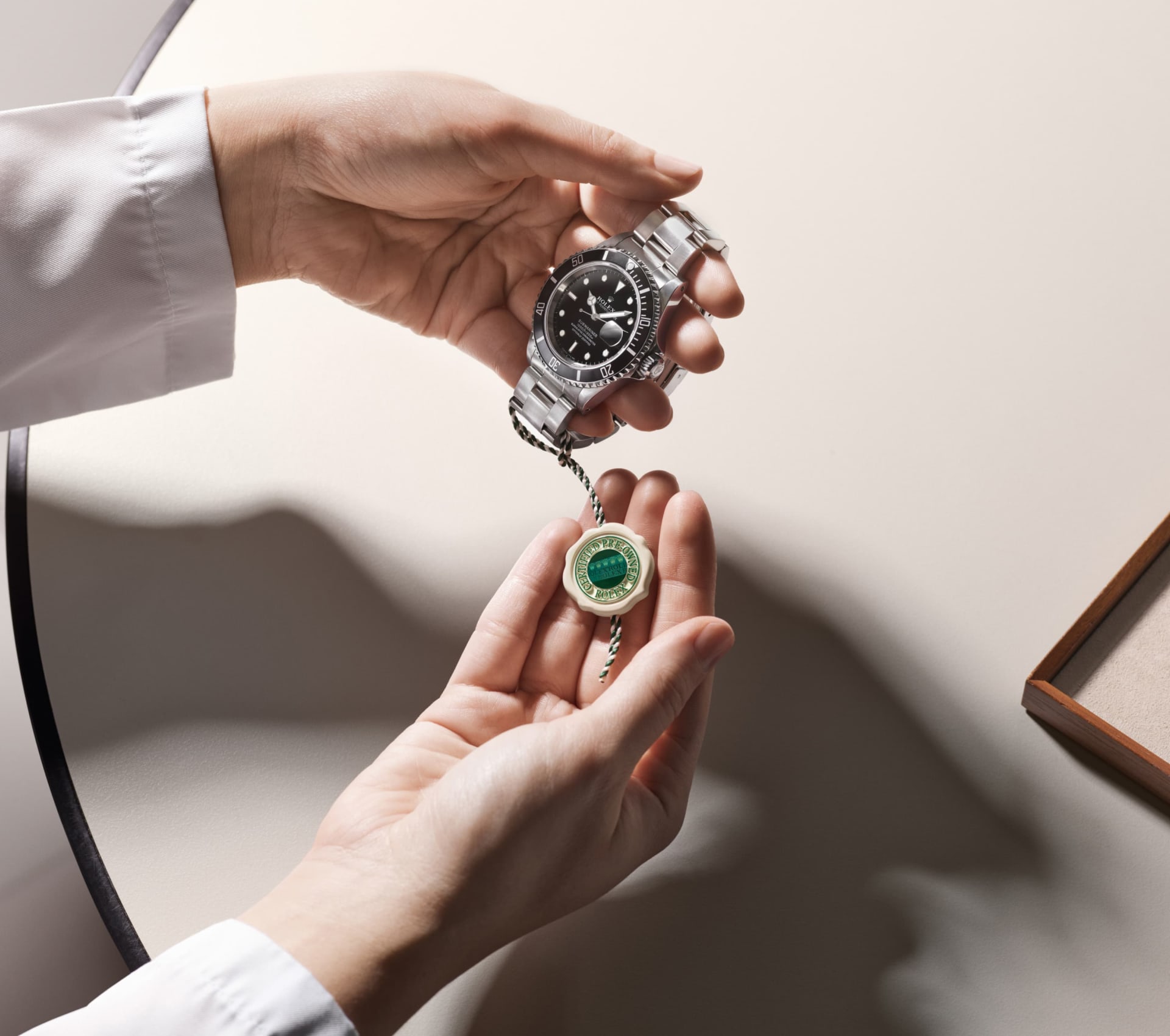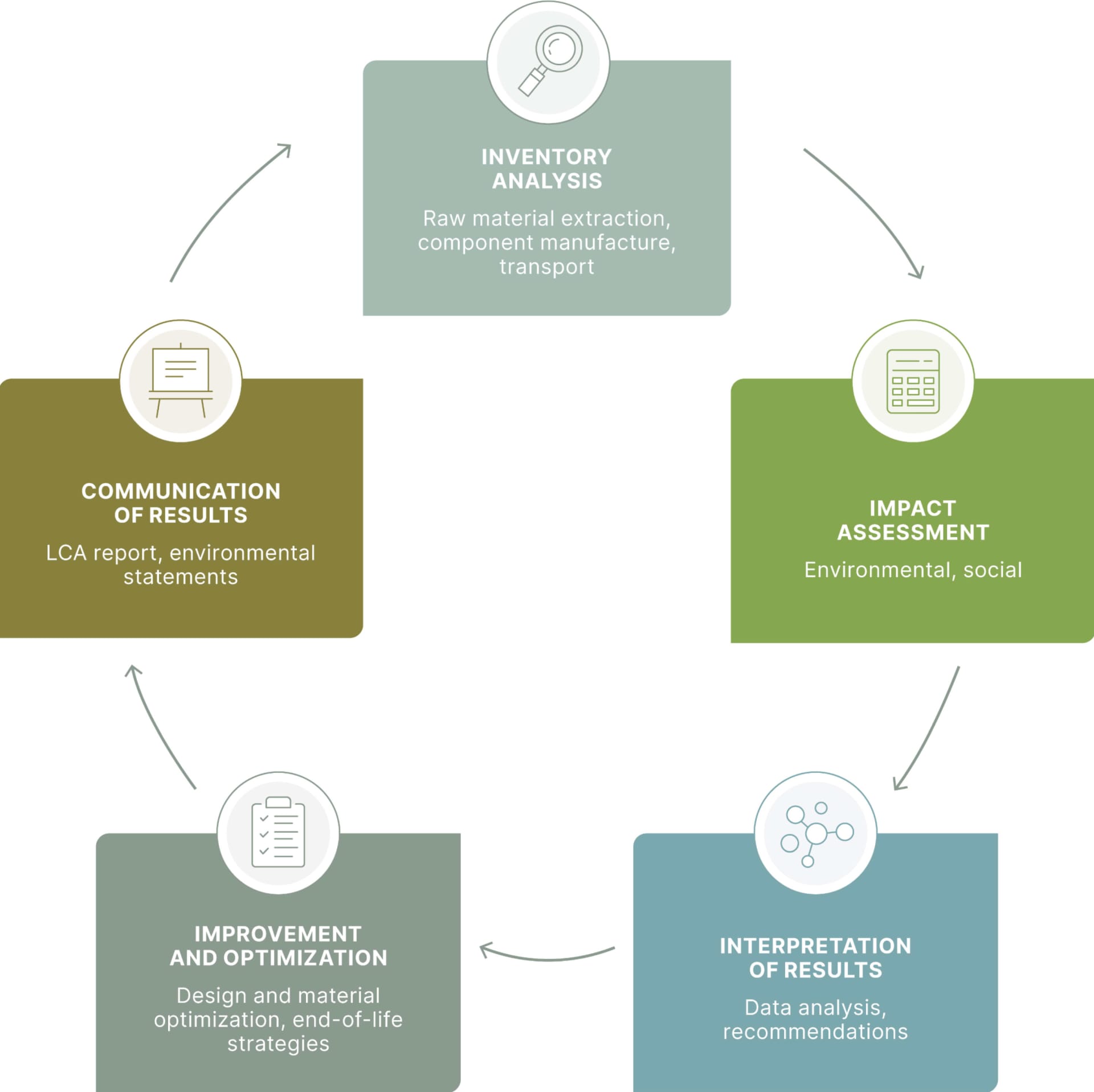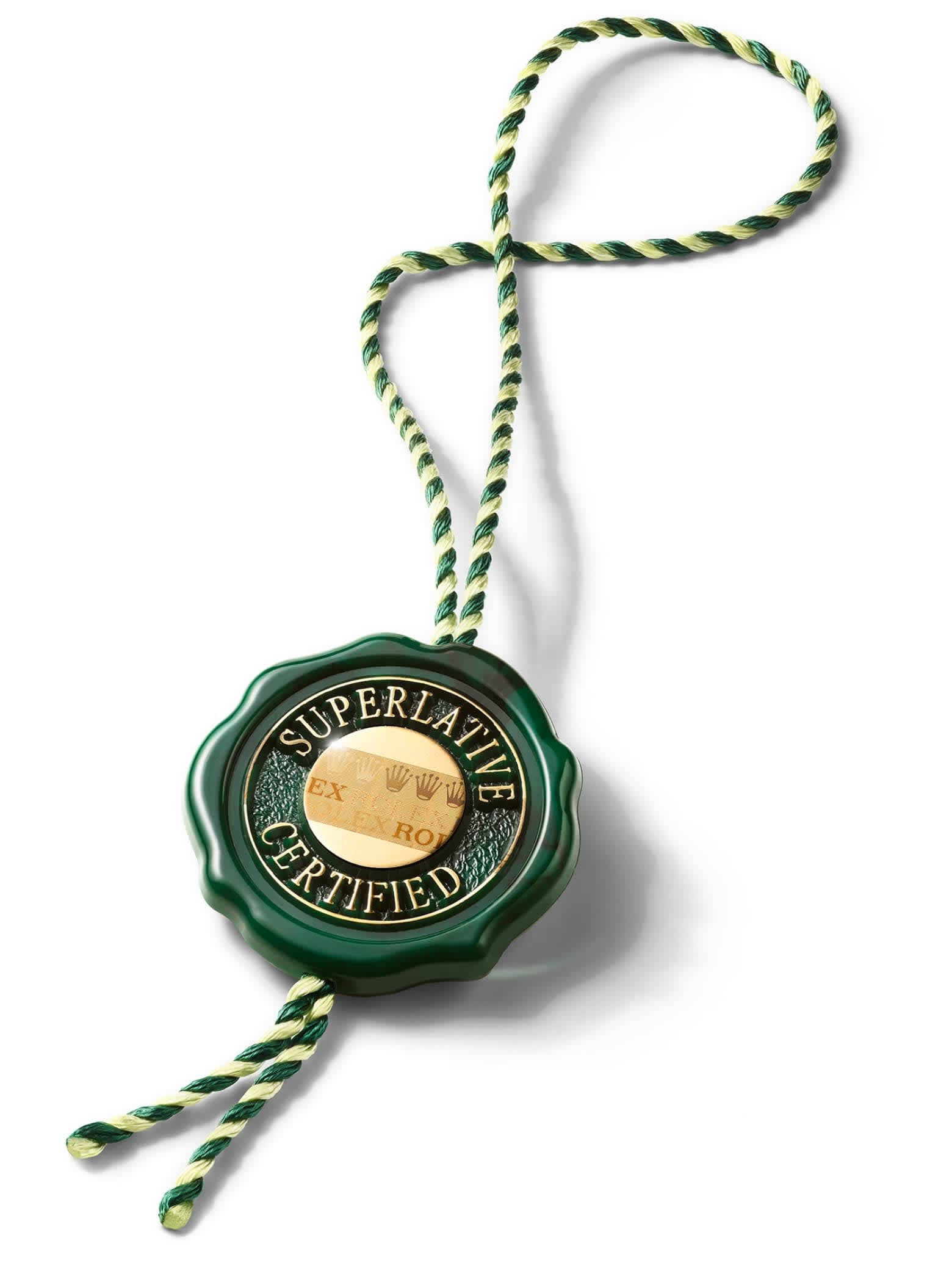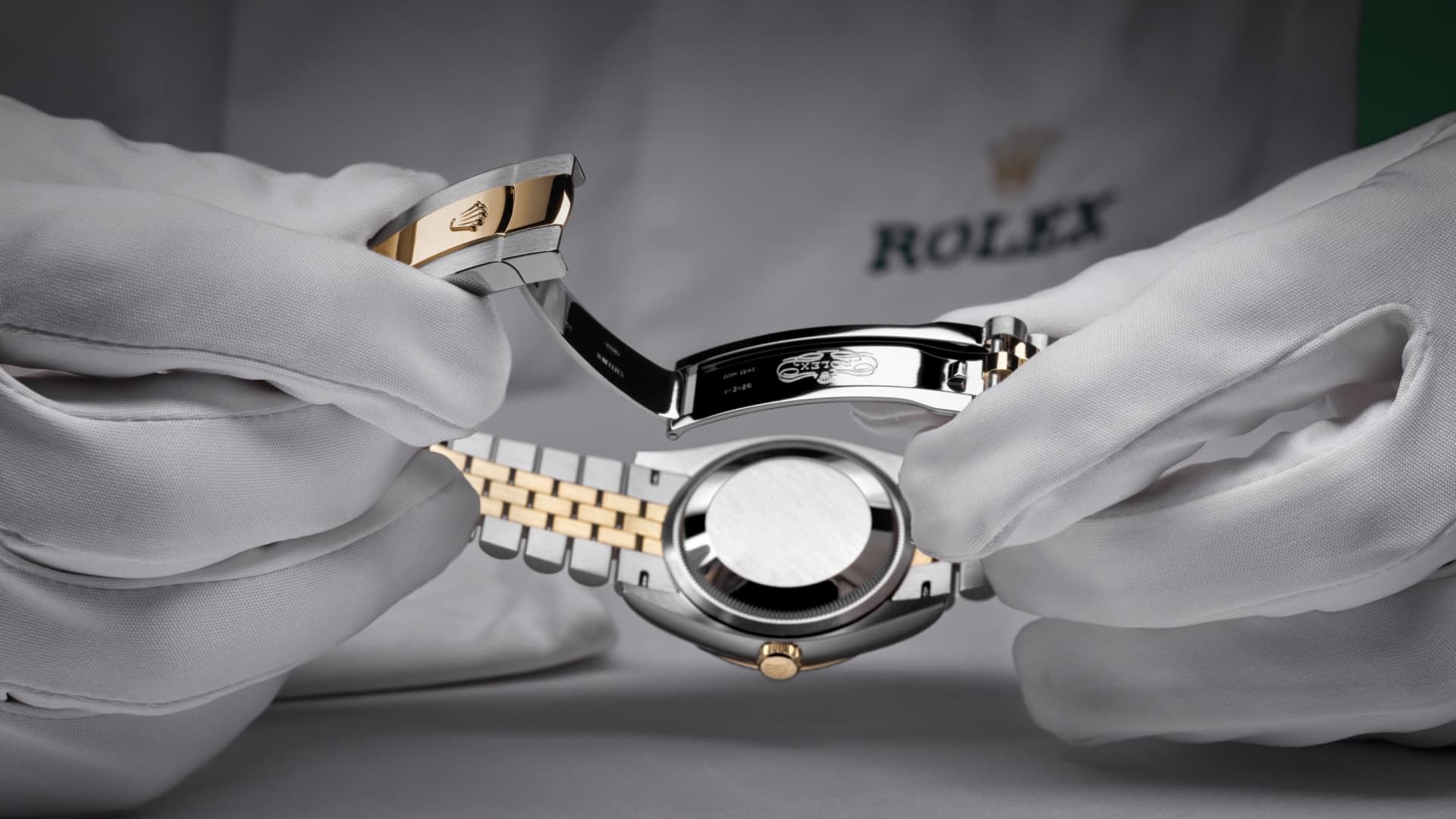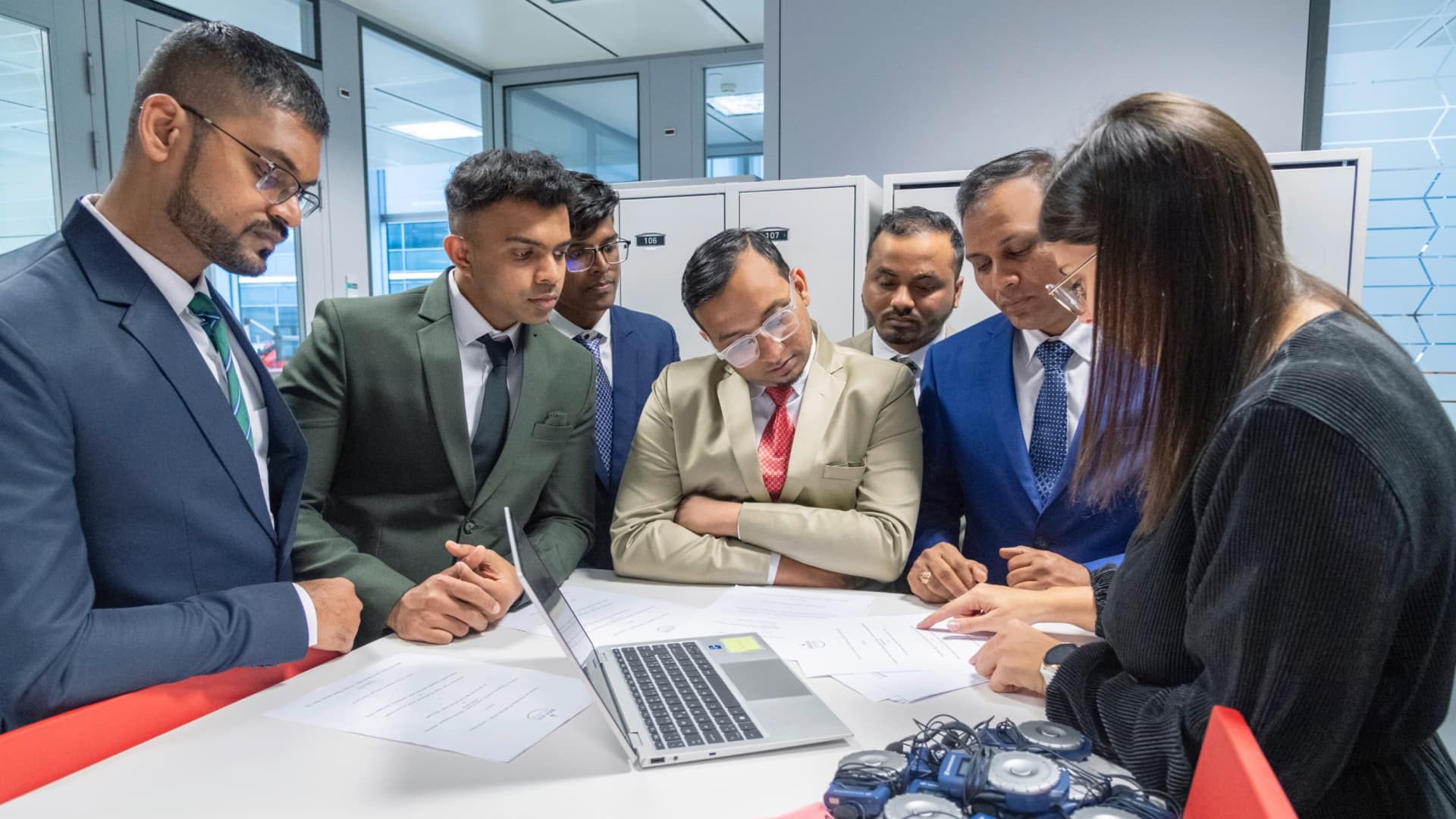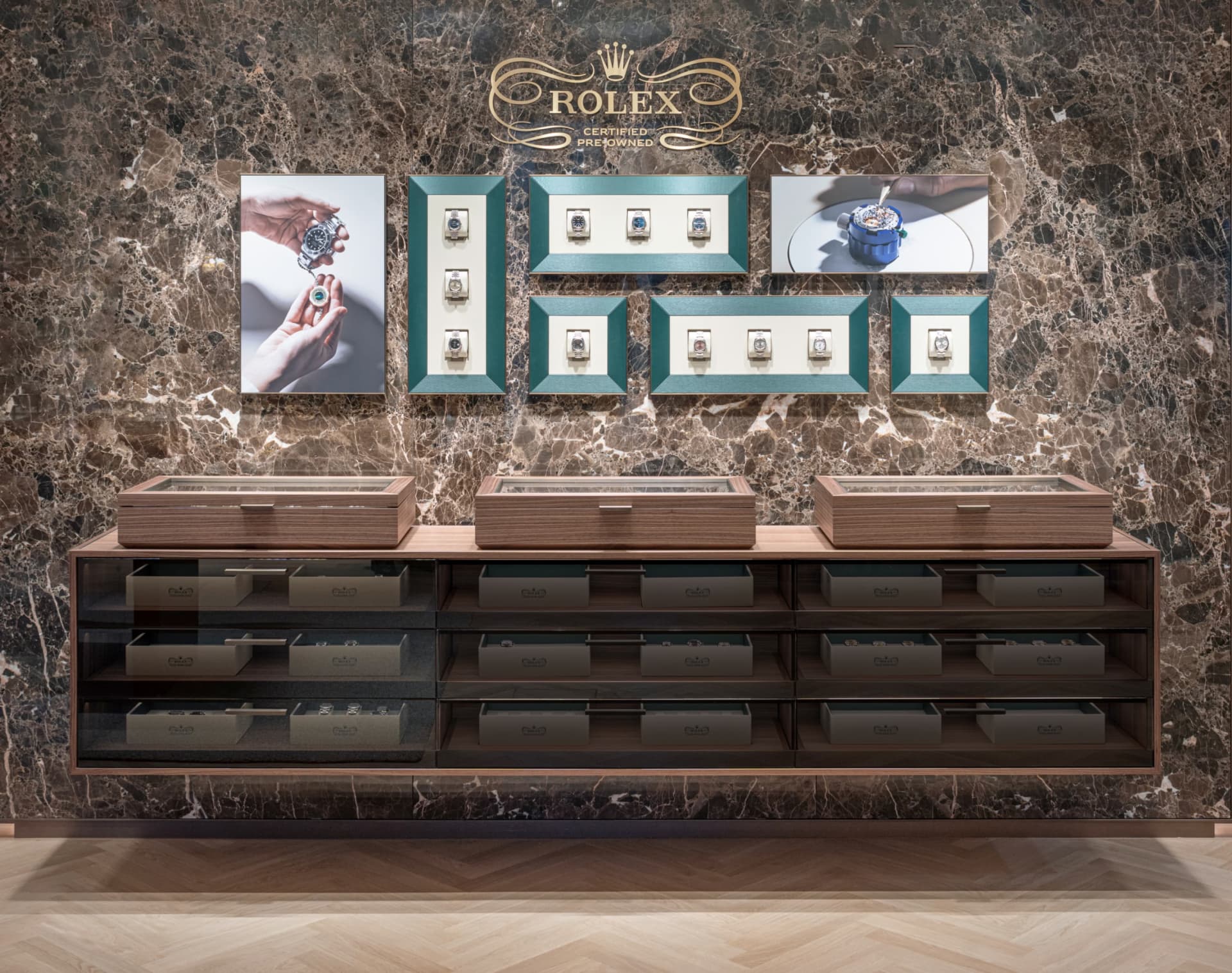Using recovered industrial gold
Derived from gold waste reclaimed in the production workshops, recovered industrial gold undergoes specific refining before it is reinjected into the watch manufacturing process.
Over the past decade, Rolex has introduced ways of limiting the losses associated with the use of precious materials as much as possible. A team of around 40 people is tasked with limiting these losses and has specific IT tools for this purpose. The brand also works with its suppliers to design equipment that makes it easier for operators to recover waste.
Gold stamping, machining and polishing generate a wide array of production waste, such as cuttings (gold alloy scrap that does not require any particular treatment before reuse); metal filings (gold alloy waste mixed with oil that requires spinning and washing before reuse); dust (present, for example, in cleaning cloths and polishing brushes); and fumes (which contain gold particles that can be recovered when cloths and brushes are incinerated).
Every gramme of gold that can be tracked down and recovered in production is extremely valuable because it represents one less gramme that has to be sourced from a mine, for example.
Rolex has a foundry that allows it to make its own castings reusing cuttings. The aim is to set up the most direct distribution possible to avoid the use of energy- intensive refining facilities, losses related to the refining process, and the impact of logistics.
As for the metal filings, Rolex melts and shot-peens them, then delivers them to the refiners, who ensure they are homogeneous and identify their degree of purity (fine gold content).
In addition, Rolex has a furnace that enables it to convert certain waste into ash, in order to determine its gold content and minimize the weight to be transported for refining (a process during which the precious metals are extracted and reconcentrated in the form of pure metals). The brand itself recovers the gold dust present in the fumes.
These various initiatives have halved losses in the space of 10 years (0.4% in 2014; less than 0.2% in 2023).
